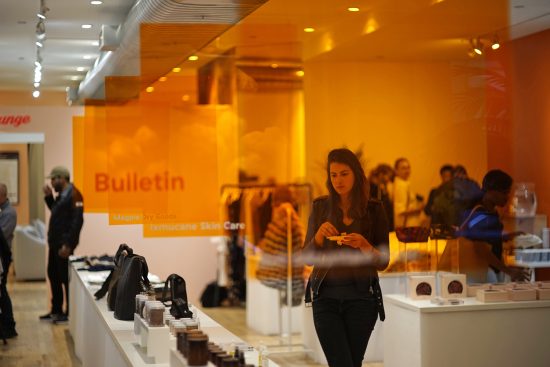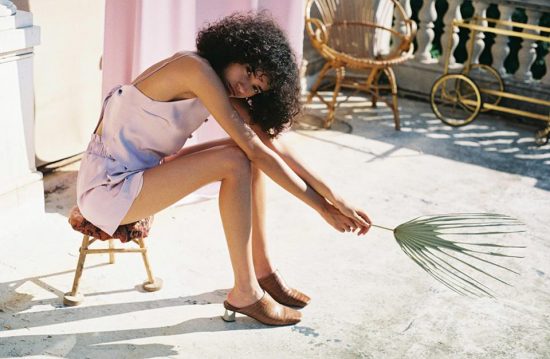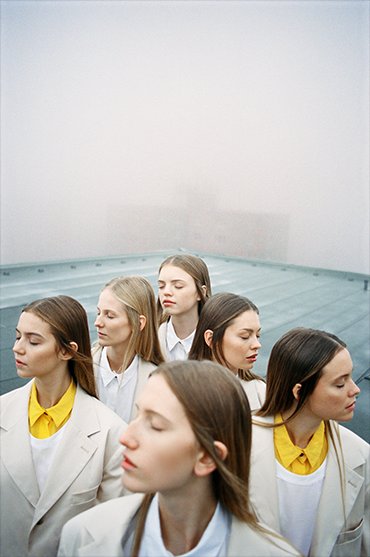(text: Emese Dobos-Nagy, photo: ÁERON SS18 campaign)
Martyna Panczak is a fashion PR and communication expert, teacher and fashion editor. After she switched from politics to fashion she had worked for agencies and created marketing and promotional campaigns for brands like Levi’s, VAGABOND, Intimissimi and River Island. She has received her fashion education participating in courses at Bocconi University in Milan (Managing Fashion & Luxury Companies) and Central Saint Martins College of Arts & Design in London (Fashion Styling for Professionals). As she has strong experience across the world and she was the head of Société Fashion, we talked about the opportunities and questions of Visegrad fashion scene.
EDN: What do you think, what are the weakness and the power of Central European designers?
MP: I think the power of our designers is actually creativity. They are often coming out from art schools what makes them thinking ’out of the box’ and ’out of the trends’ as well. And we came to the weakness, these are weaknesses too. I really appreciate strong creativity but their designs are often hardly commercial. So we see wonderful pieces of art, a lot of statement garments, definitely strong design, but sometimes it is impossible to implement it into mass production. Art schools often miss the business background, they only focus on creative part. In this case, advantage can be a disadvantage as well.
It can be hard to answer as we live here, but what is your experience in connection with the impression of the global, international audience to local designers?
As Société we teamed up with one of the most popular concept stores in New York right now and created a pop up giving Central European designers a chance to meet an American customer. It was an extremely valuable experience also for us. There were two types of feedback: Americans were extremely excited, happy and loved the way how designers were thinking and how they are out of the trends but still very fashionable. Also, the price point was very attractive. The impression was very positive and a little exotic for the Americans. The only concern was sometimes quality of the garments.
Furthermore, we also participated in an event during London Fashion Week and discussed together with leaders of British fashion scene how technology changes the industry. We had an open discussion with the audience who said they would expect from designers to be more open to all those technological innovations, use all the digital solutions to present their products. And they were negatively surprised some of them didn’t have online stores, the campaign visuals were not attractive enough, social media channels were dead. So the feedback was they should be more tech-forward, but they were positive in the aesthetic side.

As almost every designer wants to sell abroad, how do you see the local market of the region’s designers? Is it better to build a strong base here and develop step by step?
It can’t be a universal advice as it depends on the definition of success. It is so much easier to navigate if you start selling locally. In this way, you skip all the issues related to customs, foreign taxes, imports, exports… Having a strong base at home can make your living as more and more people are interested in buying from local designers. However, in countries like Czech Republic and Hungary where you have 10 million citizens, it is hard to make it big. It is so much easier to do it in Poland. It is not about the wealth but the size of the country. So when you are producing locally you can push down a little bit the price of the production and also the media coverage can work easier. I think the size of the market is very important. Designers who I know and who we are working with, I very strongly encourage to be strongly established locally and to get experiences at home and build their brands step by step.
Which brand can be a role model (and why) for the other designers from CEE?
I can see few brands from this region who I admire. One of them MagdaButrym from Poland. The brand has a very strong ID, not just in products but the styling, events, the way how they work with the readers, the way how they target their stockists, it is wonderful. From Hungary, it’s ÁERON and Nanushka which probably struggled for a while with quality, production and many other issues that are characteristic problems in the region but they created strong brands and they gain more and more attention globally as well.

Nanushka
And Nehera from the Slovak Republic.
Definitely!
Every year in Hungary for sure a lot of new fashion designers, small brands pop up. What do you think about their future? Who can stay on the market, as it is very crowded?
In my opinion, designers have to be bold and have a good understanding of the market – only knowing your customer and being fearless you can succeed these days. Recently I took part in the jury of Slovak Fashion Award and basically I was amazed by the designers, they are following extremely strongly the global trends in fashion, they got inspiration from top designers but at the same time they speak their own language and adjust to the needs of Slovak clients.
Education background plays important role in the fashion industry and the opportunities of the country’s designers. What do you see the biggest problems from the view of the upcoming, contemporary designers?
As I have mentioned, in connection with education as most of the designers came from art schools, academies can be closed to the commercial side of the profession, this forward-thinking way of doing fashion. It is a big challenge for designers to overcome. I remember that I had a discussion with Valerie Steel from FIT and we were talking about the differences between American and European fashion students. In the States, you go to the classroom and you’re told that today we create a white T-shirt with colorful applications on the back. And then the teacher explains why it makes sense and why this is a desirable product at the moment, how and where you can sell it. In Europe, they just say: create. And as a student, you sit down with a piece of paper. Both aspects have pros and cons. However, I believe that our approach brings in much more creative designers.

Nehera SS18 ad campaign, photo: Michal Pudelka
What do you think, is it necessary and possible to have a fashion capital from this region?
I think it is important to build up a hub. Designers still need to be part of fashion week, in order to get catwalk photos or editorials or videos for their own promotion. Why would we do it in such a fragmented way? If we join our forces and we create an event that represents the whole region it is less expensive and we can get better buyers and press for example. I believe in that creating a hub in the region can give better chances to break out. But it is still important to present in London or Paris for example and start being considered to be a real player of the fashion market if we concentrate on one place.
Imagine that you have superpower: If you can change anything in CEE in connection with the fashion industry, what would it be?
It is hard, I don’t know where to start! What comes to my mind is probably building up a missing ecosystem, sort of supportive base for designers and extra business education.


